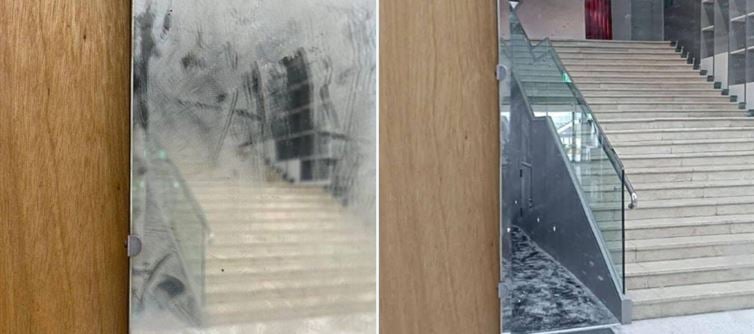
It’s the kind of headline that makes you question reality:
A museum volunteer destroys a work of art — by cleaning it.
At the Keelung Museum of Art in Taiwan, what began as an innocent attempt to tidy up a “dirty mirror” turned into an act of unintentional vandalism that art lovers and skeptics alike can’t stop talking about.
The masterpiece? Gone.
The volunteer? Mortified.
The world? Divided between “Tragic!” and “How was that even art?”
Welcome to the surreal world of modern art, where one man’s masterpiece is another man’s mess.
🪞 THE INCIDENT THAT BROKE THE INTERNET (AND THE ART)
On November 3, a volunteer at the “We Are Me” exhibition in taiwan was doing what every good museum helper does — making sure the place looked spotless.
Then he saw it: a dusty, smudged mirror. Naturally, he reached for a cloth and wiped.
Only later did he realize that “dirty mirror” was part of a contemporary installation titled Inverted Syntax 16, by Taiwanese artist Chen Sung-chih.
By the time museum staff intervened, the piece’s delicate balance — its carefully curated dust and decay — was gone.
The “mirror” had been “cleaned” into oblivion.
💀 CLEANLINESS IS NEXT TO TRAGEDY
Here’s the twist: the “dirt” on the mirror was the art.
Chen’s installation, crafted from vintage household items and construction materials, used the buildup of dust and grime to symbolize memory, transformation, and middle-class decay.
To the artist, the dust represented time, ritual, and the fragility of modern identity.
To the volunteer, it represented a lazy janitor’s oversight.
Two worldviews collided — and one priceless concept got wiped out with a single swipe.
🎭 THE IRONY IS TOO PERFECT
You couldn’t script this better.
An artwork meant to critique the erosion of values was literally erased by good intentions.
Chen’s piece questioned modern self-awareness.
The volunteer, unaware, became the embodiment of its message.
In one tragic-comic moment, life imitated art — and destroyed it.
If anything, the accident completed the artwork in the most poetic way possible.
Because what better metaphor for “shifting values” than someone mistaking meaning for mess?
🧹 A history OF “HELPFUL” DESTRUCTION
This isn’t the first time modern art has fallen victim to overzealous tidying:
In 2016, cleaners at an Italian gallery threw away a modern installation they thought was trash — because it literally looked like trash.
In 2021, a Russian security guard drew eyes on a minimalist painting during his first shift, thinking it was “unfinished.”
It’s becoming a pattern: art that looks like life gets treated like life.
And life, as we know, comes with cleaning duty.
⚖️ THE INSURANCE NIGHTMARE
The Keelung City culture and Tourism Bureau rushed to apologize, contacting the artist and the insurers.
But here’s the bizarre twist: insurance might not even cover the damage.
Why? Because wiping dust doesn’t count as “property destruction.”
In the bureaucratic world of art insurance, cleaning something too well isn’t a crime — it’s a clerical loophole.
So now the museum faces the possibility of paying out of pocket for… an act of cleanliness.
🧠 ART OR ACCIDENT? THE BIGGER QUESTION
This fiasco has reignited an old, uncomfortable debate:
If art can be mistaken for dirt, is that the viewer’s fault — or the artist’s?
Modern art thrives on ambiguity, but this incident pushes the line between profound and preposterous.
If the average person can’t tell whether a piece is meaningful or messy, maybe the “art world” needs to clean up its own definitions — not its mirrors.
Chen’s work had depth, yes. But it also highlights how detached contemporary art can be from everyday understanding.
🔥 FINAL WORD: THE WIPED CANVAS OF MODERN ART
The volunteer didn’t mean to destroy art. He meant to honor it by making it presentable.
And in doing so, he accidentally proved what most people secretly think: some modern art is one wipe away from irrelevance.
But that’s also what makes it fascinating.
Because in the fragile world of creativity, meaning and misunderstanding live side by side — separated only by a cloth.
The volunteer may have erased a piece of art,
But he also created a masterpiece of irony.
In the end, the mirror was always doing what art is supposed to do:
Reflecting us — flaws, confusion, and all.




 click and follow Indiaherald WhatsApp channel
click and follow Indiaherald WhatsApp channel